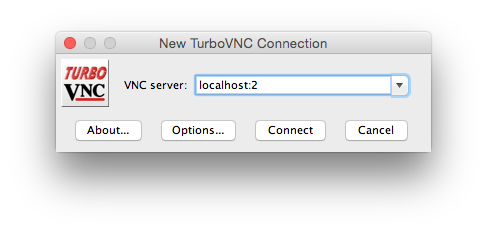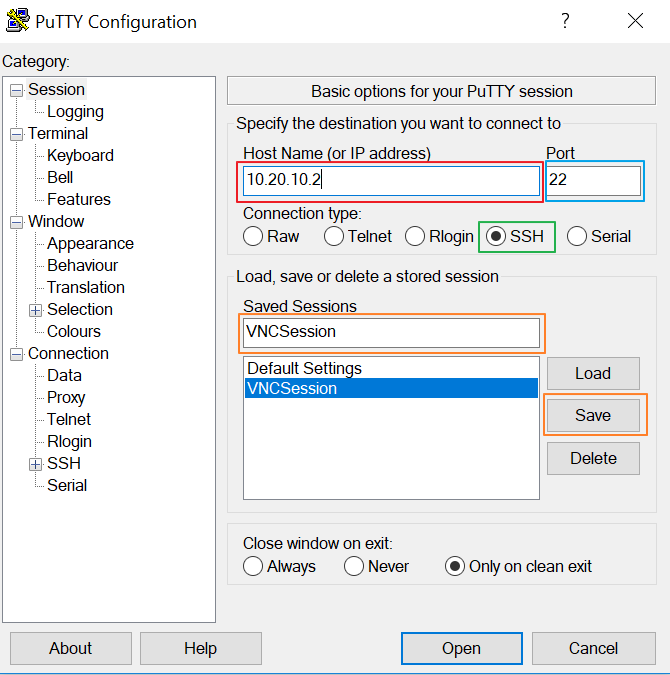
- #Whcih vnc client for mac lets you connect thru ssh for mac os#
- #Whcih vnc client for mac lets you connect thru ssh install#
- #Whcih vnc client for mac lets you connect thru ssh password#
WiFi routers) let you set up port forwarding. To do this we must do a bit of virtual tunneling. We want a computer outside our local network to connect to a VNC session on a computer on our local network. In this project we're doing the opposite. They simply turn on their device, connect to the local WiFi, and start browsing. This is great for the typical use-case of people browsing the Internet. Most importantly, NAT routers allow devices on its local network to connect OUT to the Internet, but they do not allow outside devices to connect IN to devices on the local network. The NAT router connects to the Internet instead. The connect instead to the local WiFi router. Local devices aren't directly connected to the Internet. In other words, NAT routers perform a bit of magical subterfuge. The NAT router then translates network addresses between the ones it assigned locally to IP addresses on the Internet. A NAT router instead maintains a local network such as 192.168.1.NNN from which it hands out IP addresses to local devices. It's the feature that assigns a local network address for devices on your home network, without having to assign IP addresses from a global pool. "NAT" stands for Network Address Translation. The next step is a little complex if only because the various NAT routers do this in infuriatingly different ways.Ī NAT router is what keeps your home network relatively safe. SSH'ing into a remote computer behind a NAT router It's time to take this to the next level and enable a remote VNC connection. This should work relatively well since it's all on the local network.Ĭongratulations, if you got this far you have successfully set up VNC server and client. ChickenVNC showing the Raspberry PiĪnd then voila, a desktop for your remote computer shows up. In this case I started tightvncserver on display number 2, which corresponds to port number 5902, as shown in the ChickenVNC window. In others it will as for a URL like vnc://IP-ADDRESS:portNumber. In ChickenVNC it asks for the hostname (or IP address) of the target computer. The connection setup details will vary a bit from client to client. Connection setup with ChickenVNC connecting to `tightvncserver :2` Run the tightvncserver on your target computer as above, then run the VNC client on your client computer. The first thing is to test a local connection. ru app remote-ripple and store apps details id= Testing the VNC server locally


The TightVNC team have a client program Remote Ripple (which seems to not support SSH tunneling) at

#Whcih vnc client for mac lets you connect thru ssh for mac os#
I used ChickenOfTheVNC which is a good free VNC client for Mac OS X. A key for this particular task is ensuring the VNC client can run over an SSH tunnel, or even includes SSH tunneling capability. Put "VNC Client" into the application store for your computer. There's a large variety available, even for mobile devices. When you're done, the VNC server session can be killed this way: $ tightvncserver - kill :1įrom there starting the server just requires: $ tightvncserver : 1 Set up a VNC clientįor the next step we need a VNC Client.
#Whcih vnc client for mac lets you connect thru ssh password#
It will ask you for a password for remote clients. The string :1 is a display number, and can be any number you like. Next we set up a tightvncserver configuration as so: $ tightvncserver : 1 This command ensures an X11 server is installed along with the lightweight LXDE desktop environment.
#Whcih vnc client for mac lets you connect thru ssh install#
$ sudo apt- get install tightvncserverĭepending on your system you may need to do this instead: sudo apt-get install xorg lxde-core lxde-icon-theme tightvncserver The website has binaries for other systems like Windows. On the BeagleBone Black or Raspberry Pi or an Ubuntu desktop run this to install tightvncserver (


 0 kommentar(er)
0 kommentar(er)
